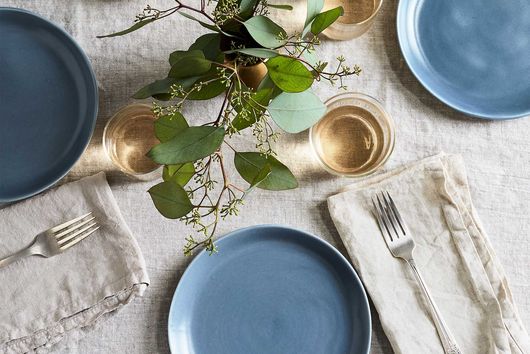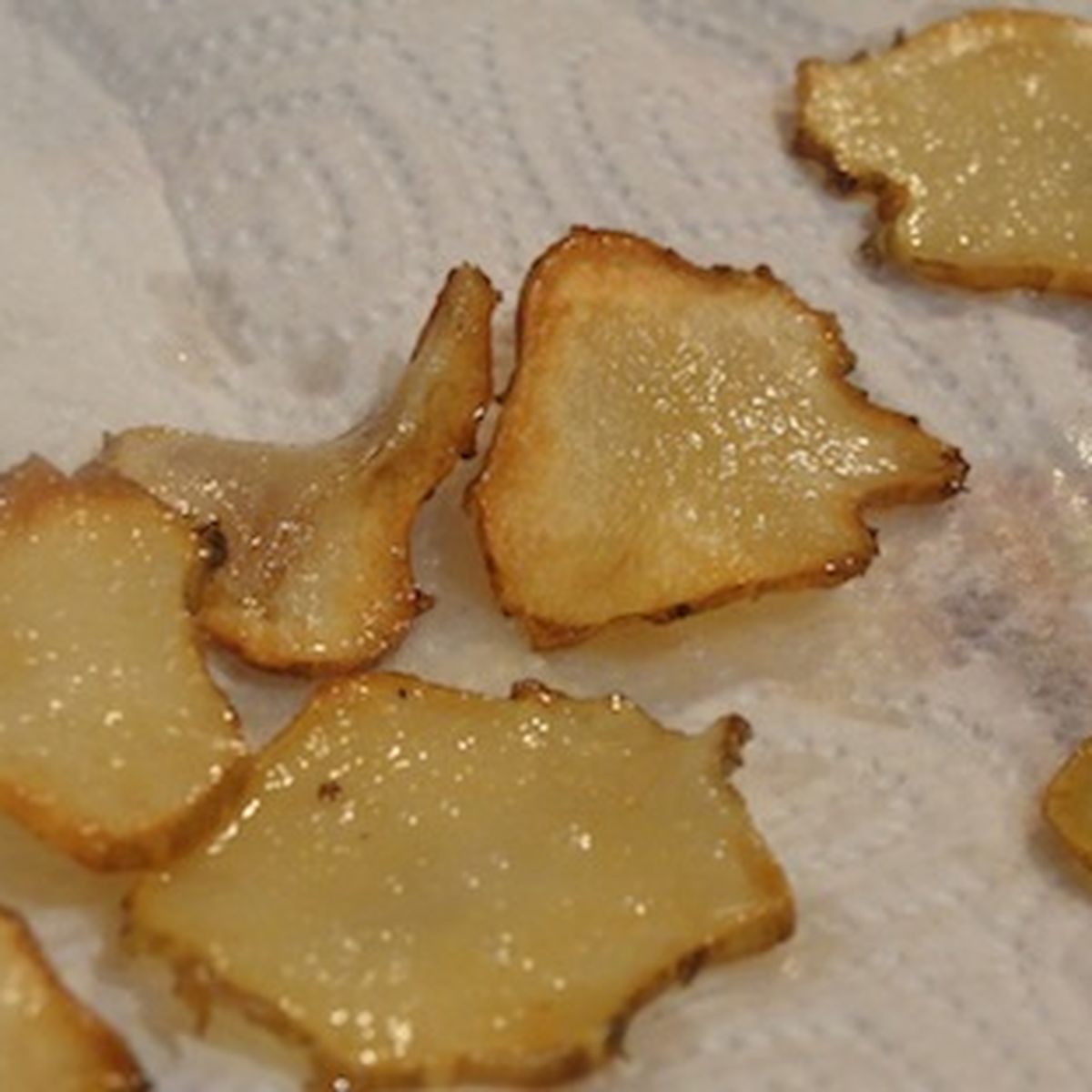Snack
993 recipes found

Candied Basil
I'd originally intended to candy some rose petals, but sadly my roses were not doing well. The basil caught my eye & well, the candied basil recipe is history.

Door County Cherry Bounce
Typically made with Door County cherries, this simple recipe mellows for about three months or until the cherries "bounce." The liqueur adds a delicious spike.

Snackin' Cukes
I tried this recipe when my garden yielded tons of cucumbers and I was dieting. I sliced the cucumbers very thin and sprinkled Splenda sweetener on them and then tarragon vinegar. I refrigerated them for a few hours and when I got the muchies this "sweetish" delight made a great dietetic snack. I now serve this treat as a summer salad. Hope you like it.

Minty Iced Tea
I keep a container of this concentrate in my fridge almost all the time. It's a refreshing, envigorating way to use up an abundance of spring mint. - vvvanessa

Savory Toasted Pine Nuts
These tasty toasted pine nuts make a nice alternative recipe to nuts, for use in salads, on sauteed greens, or in savory cookies, crackers or pastries.

Poor Man's Kombucha
This drink has the vinegar-y tang of kombucha, without the cringe-inducing price tag. Of course, the ultimate poor man's kombucha would be to make your own, but this is faster and less work, and has a charm all its own.

Hippie Popcorn (With Nutritional Yeast And Soy Sauce)
In this Popcorn recipe, melted butter, which is perfection in itself, is infused with lightly-toasted garlic. Soy Sauce & Nutritional Yeast give a shot of umami.

Sunchoke Chips
These sunchoke chips can be whipped up in minutes. This unique recipe with an artichoke alternative has such a unique taste, it will surely be a success!

Cayenne Popcorn with Nutritional Yeast
This popcorn would be great bar food - it makes you thirsty!!! The Nutritional yeast adds a cheesy flavor and lots of B vitamins.

Garlic Sriracha Popcorn
After making broiled oysters, I still had leftover sriracha butter. I popped popcorn and tossed it in this incredible concoction.

Honey-Roasted Peanuts
I've always loved the subtle sweet flavor of honey that goes well with roasted salty nuts. It enhances the natural nutty flavor, with the added bonus that it serves to be an excellent and healthy anytime snack!

Salty Sweet Popcorn (for all seasons)
I make this sweet and salty popcorn recipe for rooftop movies I host during the summer, served up in individual brown paper bags. It's easy and inexpensive!

Banana Bread
Here is an easy way to use up the bananas on the countertop, or brown ones thrown in the back of the freezer. Don’t overmix the ingredients, and make sure the bananas are very ripe.

Cold Soba Noodles With Dipping Sauce
In Japan, where it gets plenty hot in the summer, cold soba noodles, served with a dipping sauce, are a common snack or light meal. Soba are brown noodles, made from wheat and buckwheat, and the sauce is based on dashi, the omnipresent Japanese stock. You would recognize the smell of dashi in an instant, even if you have never knowingly eaten it. It's a brilliant concoction based on kelp, a seaweed, and dried bonito flakes. It is also among the fastest and easiest stocks you can make, and its two main ingredients – which you can buy in any store specializing in Asian foods – keep indefinitely in your pantry. I would encourage you to try making it, though you can also use chicken stock (or instant dashi, which is sold in the same stores).

Jordan Marsh’s Blueberry Muffins
In 1985, The Times published a recipe for the blueberry muffins served at the Ritz-Carlton hotel in Boston, which Marian Burros, who adapted the recipe, judged among her favorite muffins in the city. A few years later, a reader wrote Marian to say that the best blueberry muffins in Boston were in fact from the now-closed Jordan Marsh department store. Marian tracked down and adapted that recipe so you can judge for yourself. But the origins of the Jordan Marsh recipe were unclear until 2023, when Mara Richmond of Burlington, Vt., wrote The Times to say that the developer of the recipe was her father, Arnold Gitlin, then the executive food consultant for Allied Stores, which owned Jordan Marsh at the time. His recipe, Richmond said, was an adaptation from one in Esther Howland’s 1847 cookbook, “The New England Economical Housekeeper, and Family Receipt Book.” Everything old is new again. This version has a lot more sugar and butter and fewer eggs than the Ritz-Carlton muffins. It also calls for mashing a half cup of berries and adding them to the batter. This produces a very moist muffin, one that will stay fresh longer.

Cucumber Salad With Roasted Peanuts and Chile
Easy to assemble but far from basic, this cucumber salad delivers a riot of flavors and textures with snappy cucumbers, velvety peanut sauce, crunchy cilantro-peanut topping and zingy chile oil. The details make all the difference: First, salting the cucumbers mutes the fruit’s subtly bitter notes while heightening flavor. Next, the simple peanut sauce adds richness to the cool cucumbers. (Make a large batch and store it in the fridge to drizzle over vegetables, chicken and salads.) Finally, a flurry of finely chopped peanuts, cilantro and red-pepper flakes gets dusted over the salad in layers to disperse flavor.

Peanut Butter Brownies
Joanna Gaines of Magnolia Table in Waco, Texas, developed this recipe for a layered treat that combines the best of a brownie, a candy bar and an ice cream sandwich. The fudgy texture of brownies makes a perfect base for peanut butter and a fluffy chocolate topping. You can use a different chocolate frosting or glaze for the top layer, depending on what ingredients you have on hand.

Supernatural Brownies
This recipe is an accidental creation by Nick Malgieri, who (in a rare human moment for a pastry chef) once forgot to double the flour when baking his own fudge brownie recipe. He also adds a measure of brown sugar to the basic formula. The experts are divided as to whether the brown sugar actually contributes flavor or simply makes the brownie moister (molasses, which makes brown sugar brown, is powerfully hydrophilic). It’s my belief that the slightly bitter taste of molasses acts as an invisible enhancer to the chocolate. The result is as complex and sophisticated as any terrine or truffle I have ever produced.

Rice Krispies Treats With Chocolate and Pretzels
Marshmallow treats can skew saccharine, but this slightly more sophisticated version embraces the salty as much as it does the sugary. Sweet marshmallows and chocolate are balanced by plenty of salt: in the butter, on the pretzels and in the flaky sea salt finish. Butter-flavored pretzels (“butter snaps”) have a delicate crunch and a creamy note that work well in this recipe, but any small, thin pretzels are also good. You'll want to use chopped chocolate here instead of chips: They melt faster, so you end up with smeared chocolate bits instead of distinctive chunks.

Buttermilk Banana Pudding With Salted Peanuts
Banana pudding typically sits on the sweeter side of the dessert spectrum. Despite layers of instant pudding, vanilla cookies, sliced bananas and meringue or whipped cream, the sweet snack can feel a little one-note. But with a few simple tweaks and some new ingredients, it can feel fresh. The addition of buttermilk gives the custard a tangy zip of acidity, and tossing the Nilla Wafers with salted brown butter imparts a nutty, caramel-like flavor. Sour cream is incorporated into the whipped-cream topping, which helps the heavy cream stay firm while refrigerated and turning this into a fail-proof make-ahead dish. Garnishing the top with some more crushed cookies and chopped salted peanuts provides the pudding with crunch.

Cherry Yum-Yum
If its name is any indication, this retro Southern no-bake dessert maximizes flavor — and it does so while minimizing time, effort and ingredients. Layers of graham cracker crust, tangy cream cheese and canned cherry pie filling create a dessert that straddles a no-bake cheesecake and a classic trifle. The graham cracker crust sets as it chills, lending both texture and a toasty flavor that balances the rich dairy and the sweet pie filling. Almond extract, though optional, complements the cherries perfectly. Yum-yum is the perfect blank canvas party dessert — you can amend it with different cookie bases (Oreos or gingersnaps); flavorings in the cream (Kirsch or almond liqueur); and pie fillings (apple or berry) to suit all seasons and tastes.

Sugar Cookie Bars
These sugar cookie bars, which are adapted from “American Girl Cookies,” are happiness in a 9-by-13 pan. The addition of cream cheese in the batter makes them very tender and slightly tangy, a perfect counterpoint to the sweet buttercream frosting. You can, and should, experiment with frosting colors and use sprinkles with abandon. Whatever you do, do not overbake these beauties. When testing for doneness, you want a few moist crumbs to cling to the toothpick.

Pastelitos (Guava and Cream Cheese Pastries)
In Havana — and in Cuban neighborhoods across the U.S. — pastry shops make many types of cakes and cookies, but the best-sellers are always the pastels and pastelitos, flaky pastries filled with meat, cheese, coconut custard or guava jam. According to “Paladares: Recipes from the Private Restaurants, Home Kitchens, and Streets of Cuba” by Anya von Bremzen (Abrams, 2017), the shape of the pastel correlates with the filling: Triangular pastels are filled with guava paste and cheese, while rectangular ones are filled with just guava. Versailles, a Cuban restaurant in Miami, follows this rule, but at home, just make them rectangular, and add a swipe of cream cheese if desired. You can find guava paste in bricks at Latin American grocers, or swap in about 1/2 cup jam or preserves for a nontraditional take.

Lane Cake
This version of the classic Southern cake takes all of fruitcake’s best elements — bourbon-soaked dried fruit, toasty pecans and shredded coconut — and weaves them into a rich, custardy filling set between three layers of tender vanilla cake. It’s a special occasion dessert and a nightcap, all rolled into one. Acetate strips (see Tip) are useful for holding the layers in place while assembling, but if finding them is too much of a bother, use parchment or follow the instructions to assemble the cake without the strips. The flavor of this cake improves with time, so allow a few hours — or even a few days — before slicing and enjoying.